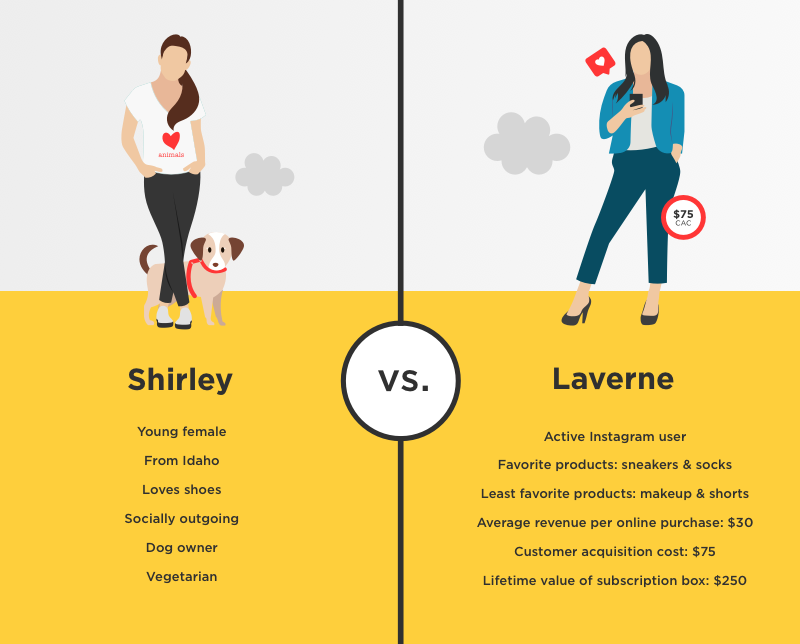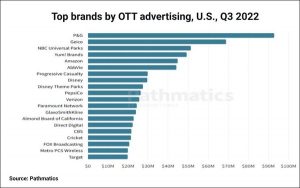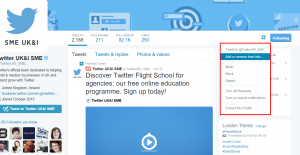— July 17, 2019
Close your eyes and picture the ideal customer for your ecommerce business. Do you have a sense of what they look like?
How old are they? What do they do for a living? What are their interests and hobbies?
You’re imagining a buyer persona, and it’s not just a thought exercise—it’s an essential tool for making decisions about how to acquire new customers, what to offer them, and how much to charge.
However, buyer personas are only as useful as their constituent data. Say your buyer persona includes “loves the outdoors.” What does that tell you about how much that customer is willing to pay for your product?
Another problem that occurs with buyer personas is the failure to keep them updated. Businesses that transition into subscription services often fail to create new buyer personas, despite the fact that a subscription is a completely different product.
You’re likely to find that customers who are ready and willing to commit to a long-term relationship are either different from your single-purchase customers, or in a different phase of their online shopping journey. In order to create the right messaging, offers, and pricing for these customers, you need to be able to not only map out a buyer persona, but quantify it as well.
The goal is to know your customers beyond their age, hobbies, and demographics. You need to be able to quantify the expected value of your buyer persona, and build around the value they provide to your business, not just their personal characteristics. These personas need to be founded on verifiable data returned from points of engagement on the customer journey.
A buyer persona based on a person’s qualities can tell you what they’re like. A quantified buyer persona will tell you how they will act.
How to Quantify a Buyer Persona
It can be tempting to think of building buyer personas as being akin to creating character profiles for a story or role-playing game. That might be a fun exercise for the marketing team, but it’s not going to help you make data-driven decisions about things like pricing or product design.
A quantified buyer persona is based on number crunching, not personality characteristics. The traits you should be interested in are the ones that can be discerned from how the customer interacts with your website—not self-reporting or subjective impressions.
Consider the difference between these two buyer personas:
Shirley
- Young female
- From Idaho
- Loves shoes
- Socially outgoing
- Dog owner
- Vegetarian
Laverne
- Active Instagram user
- Most purchased products:
- Sneakers
- Socks
- Makeup
- Shoes

As a digital marketing team, which type of persona gives you more to work with? The Laverne persona tells you which marketing channel to approach, how much to spend, and which product to try and sell. Now, if you also add additional demographic data on top then you can easily hone in your messaging as well and create a very successful customer journey that ends in high conversion rates.
Who Should Quantify a Buyer Persona?
When it comes to putting together a good buyer persona, consider that the whole company will benefit from this endeavor. The interactions and data included in the persona may involve the work of multiple departments. For these reasons, it’s important to pull in a variety of perspectives on what constitutes relevant, quantifiable data; and how best to capture it. Managers, salespeople, designers, developers, and the marketing team all have a role to play in creating the buyer persona:
- Customer acquisition cost (CAC), the amount of money you spend (on average) to acquire a new customer, is an important metric to base many decisions on.
- Your marketing department is likely already tracking CAC, ideally along different channels for different types of customers.
- How much are your customers willing to pay (WTP) and at what point do prices become too high and result in reduced profits?
- Your team should have that information along with the life time value (LTV) of repeat customers, if you offer a subscription service, or the Average Revenue Per User (ARPU) if you don’t.
These figures have important interrelationships. The ratio of your LTV to CAC or ARPU to CAC can tell you if you’re spending too much money to acquire new customers. If you’re pricing below the customer’s WTP, and if you have room to adjust your prices higher to bring that ratio back to favorable levels or do you need to reduce operational costs.
How Quantifying Your Buyer Persona Helps ecommerce subscriptions
In a nutshell, the objective of a quantified buyer persona is to help you construct your conversion funnel so that customers move smoothly from one level to the next, providing maximum value for your marketing, sales, and retention expenditures along the way.
Quantified buyer personas can help you identify areas where a one-size-fits-all product is holding you back. If you can pin down their WTP—the price they’re actually comfortable paying up front—you might be able to offer an alternate product that keeps them in your conversion funnel.
For instance, a business that offers a $ 99 monthly subscription with a lifetime value of $ 594 and a 25% churn rate might find itself receiving inquiries from customers who balk at the high initial price. If that same company determines that their quantified buyer persona has a WTP of $ 49 / month and a prospected Lifetime of 16 months, they might then decide to offer a monthly subscription at that price point, leading to more customers giving them a try and ultimately deciding to stay on long-term.
By identifying the marketing channel that’s leading most of these quantified buyer personas to your site, you can choose to emphasize the products they’re most likely to be interested in purchasing.
Pricing is an especially big challenge for retailers that offer subscription boxes or similar services It’s less straightforward than assigning a fixed price tag to an individual product, and there are many theories and strategies for optimizing the price points for a subscription-based service. A quantified buyer persona won’t necessarily tell you which method to go with, but they will provide a baseline of reliable data to inform your decisions.
How Dollar Shave Club Recovered Lost Online Revenue Discover how Dollar Shave Club prevented customer journey hijacking and increased conversion rates
How Do I Discover My Quantified Buyer Personas?
An easy place to start is to look closely at your most engaged customers. They’re the ones who stick with your brand by signing up for a newsletter, make repeat purchases, leave great product reviews, join your subscription box, and even championing your brand among their friends on social media. They represent a sort of “ideal” customer for you so you’d like to attract more like them, right?
Understand these customers by looking for common similarities in digital behavior. The ideal persona should be based on a goal you set for it. For example, if you imagine your ideal buyer persona to be an advocate for your brand and fundamental to its growth then perhaps you should create a buyer persona based on users that engage your content on social media.
Your Instagram followers could be the perfect fit for your brand so building a persona around users that like your content, comment on it, go to your website, join your subscription box program, and then upload their own photos of themselves with your products as they are delivered. Imagine if you could create a buyer persona out of this audience and successfully target it.
Now, I’m not saying that demographic data is useless. Actually, once you have your quantified persona data you can enrich it with demographic data that can better help you understand the audience. However, it’s important to start with the quantified data and then enrich with demographic data not the other way around. The next step is to connect your new persona with your products:
- Which products are of the most interest to the persona?
- Which marketing channels were effective in leading them to your site?
- Most importantly, hone in on the three key numbers that help you determine if you’re providing the right value for the price you’re charging: WTP, CAC, and LTV.
- How much does it cost to bring in a customer that answers all these criteria?
- How much would they be willing to pay per month?
- How long do they typically subscribe for?
- What is their overall life time value?
Getting this data may take time but it shouldn’t be difficult. These are all metrics any eCommerce subscription service should be tracking. Internally, you can seek out reporting and analytics from various customer-facing departments, such as competitor data, market research, and feedback from customer support. You should also go to the source by soliciting information directly from your customers via surveys, interviews, and comment forms.
When you have built a quantified buyer persona that addresses the subscription boxes they want, the price they’re willing to pay, and the cost of turning them into customers; then your teams can have a clear, shared vision of just who it is they’re designing for, who they’re marketing to, and what it is that draws these people to your company instead of your competitors.
Build It and They Will Come
Every step in the customer’s journey has the potential to yield useful insights into their motivations. Building the perfect, quantified buyer persona will take time and experimentation as you work to identify the type of buyer that best represents the optimal use of your acquisition and retention budget.
Study these customers, find their best paths through the conversion funnel, and map them. When you put together customer personas that stand on a foundation of solid, relevant data, you can make sales and marketing decisions based on proven facts about what your customers want and how they interact with your site.
Stop trying to guess how to translate the personality traits you might find listed on social media or a dating app into actionable business insights. By quantifying your buyer persona, your path to optimizing your SaaS pricing becomes clear, accurate, and profitable.
Digital & Social Articles on Business 2 Community
(30)






